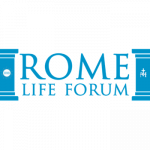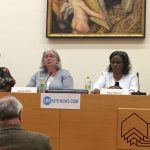Written by Kathy Clubb
The Second Assembly of Australia’s Plenary Council is underway this week, and while the organisers have designated this session as part of the “celebration phase”, it is difficult to find anything to celebrate. The futile process, meant to radically transform the Church, has dragged on for more than four years, and is pleasing neither traditional nor liberal Catholics.
Sunday’s Opening Mass demonstrated the result of surrendering our Catholic identity to the chic spiritual currents of the day. The Mass showcased some of the liturgical novelties with which we are apparently to become familiar: an acknowledgment of the traditional occupants of the land, complete with didgeridoo and requisite smoking ceremony, all topped off with a fashionably-inclusive invocation of both male and female spirits.
Although a Plenary spokesman stated that the distinction between Aboriginal rituals and Catholic liturgy is always very clear, it is unlikely that most Catholics would notice any distinction. Amongst those who do acknowledge that the pagan rituals precede the Mass, instead of being melded into it, many would rightly realise that by their precedence, and by their very presence in a Catholic Church, Indigenous rituals are elevated to the same level as Catholic ones. This is especially true when an Aboriginal woman “asks permission” of the ancestral spirits before the liturgy can go ahead, as happened before this Mass.
In contrast with Sunday’s sorry display of syncretism, Monday’s closing Mass was offered in the Byzantine Rite and surprisingly, there were no Indigenous adornments to be found. It seems that only Roman Rite Catholics are to be subjected to pagan embellishments arbitrarily selected from Aboriginal spirituality.
While it isn’t known what the bishops in attendance thought of the innovations preceding the Opening Mass, it is to be hoped that at least some of them were perturbed by the scene. However, experience has shown that many of them already employ indigenous rituals in their Masses, occasionally donning Aboriginal-themed vestments[1] and face-paint[2], so it may not be realistic to expect any criticism from that quarter. The crosses handed to participants of the Assembly support the latter idea since they were decorated with Aboriginal-style patterns while the figure of Christ is conspicuously absent. A resolution has already been passed[3] to ensure every parish honours the “Traditional Custodians” in some way and Bishop Shane McKinley has reported that a new penitential rite is to be devised, one based on aboriginal spirituality.[4]
It will be evident to anyone who has watched the brief “Highlights” videos produced by the Plenary Assembly to see that the Church in Australia is experiencing an identity crisis.[5] Viewers would be hard pressed to find anything noticeably Catholic among its images, although the secular world might be impressed. Aboriginal rituals and music, dialogue – lots of dialogue, excited statements about ‘new beginnings’, ‘dreams’, ‘transformations’ and ‘courageous’ self-reflection abound, with a few references to Christ thrown in to appease the less-radical. If this is anything to go by, then our unique Catholic identity is sorely missing from proceedings.
Archbishop Julian Porteous of Hobart, wrote about this loss of identity[6] some months ago, after reading the working document released prior to the Second Assembly. He has been the most outspoken of the bishops in expressing his concerns with the overall Plenary process, and his strident criticism does something to compensate for the silence of his confreres.
In his article, Archbishop Porteous expressed concern for the Australian Catholic Church, stating that he believes the Church “has lost confidence in its identity and mission.” He wrote that the Plenary document failed to convey the Church’s primary mission, that of offering hope and unadulterated truth to the world. He reiterated the disquiet felt by many Catholics on seeing the Church reduced to a secular corporation, using language such as a “supportive and inclusive community” yet failing to express that great “mystery of the Church” which has inspired countless saints and martyrs.
Archbishop Porteous highlighted the vague terms often employed in the document along with a lack of concrete solutions to what are glaringly self-evident problems. He also correctly identified multiple instances where settled teaching is being directly challenged, such as by the request for wider use of the Third Rite of Reconciliation and by the insistent demand for women’s ordination. Archbishop Porteous wrote:
“If this working document is largely accepted as the basis for the Second Assembly it will not facilitate the spiritual and pastoral renewal so needed at this time, but rather it will allow the process of further decline to occur, if not accelerate it. Without a serious effort at interior renewal and a new zeal for evangelisation the Church in Australia runs the risk of becoming a shallow image of its former self.”[7]
That decline of which he wrote is quite evident in the key points selected for debate at the Second Assembly: Healing; Repentance; Mission; Gender Equality; Eucharist; Formation; Governance and Environmentalism. Most of those topics would not be out of place in a secular organisation’s cultural sensitivity programme. Even the seemingly orthodox suggestion of studying the Sacramental life of the Church loses its significance in the context of calls for lay-preachers, female deacons and the eventual ordination of women.
Archbishop Porteous pointed to the Church’s sole task: that of proclaiming “that Jesus Christ is the way to salvation,” and chided the Plenary Council for failing in its fundamental obligation. As he observed, instead of “listening to what the spirit is saying,” the Plenary members have instead “listened to the spirit of the age.”
Those sentiments were echoed by the Syro-Malabar Eparch, Bishop Bosco Puthur, in his homily at the evening Mass after the Assembly’s first day. Bishop Puthar suggested that the Church is “incapacitated” because She is “consumed by the spirit of the world.” He also pointed to envy being at the root of instability within the Church, saying, “The problem starts when the ear wants to grab power from the eye; the leg wants to do the job of the hand; envy is the number one enemy.”[8]
Australia’s Plenary can be put into the wider context of the new ecclesiology of the “Synodal” Church. The vision of the Pope and his like-minded Cardinals is for a church in a constant state of dialogue and evaluation, with ongoing synod-style meetings. Many of these are already underway in countries other than Australia, such as in Germany, Ireland and Cameroon.
Speaking to Catholic Family News on the notion of synodality, Auxiliary bishop of Astana, Kazakhstan, Athanasius Schneider, pointed out that this idea was unheard of within the Church until 1965. Archbishop Schneider also noted that even use of the term “synod” is dubious, as the “sacra synodus” (“sacred synod”) was originally applied to an ecumenical or general council and not to a meeting of local bishops. Bishop Schneider explained how the notion of synodality is at odds with the Catholic position of the Pope being unique head of the Church:
“Our Lord Jesus Christ instituted Peter as the only supreme personal shepherd of His entire flock, including both clergy and faithful. Peter is also the only rock upon which Christ built His Church (cf. Matt. 16:18). There are not two rocks or two supreme shepherds, i.e., a personal rock and on his side a collegial rock, or a personal supreme subject (shepherd) and on his side a collegial supreme subject (shepherd).”[9]
He further criticised the idea, saying that synodality “represents a superfluous multiplication of ecclesiastical structures and bureaucracies in the life of the Church,” noting the increased cost associated with the ever-growing machinery of Church governance.
The phenomenon of expanding costs and red-tape can be clearly seen in the bloated Plenary apparatus as well as in its recommendations. The cost of the Plenary isn’t readily available to the public, but taking into account the wages for lay-organisers over four years, travel and accommodation for multiple meetings and sessions, marketing, digital technology requirements, printing and so on, the cost must be enormous.
The Plenary’s recommendations, if implemented, will only increase that cost, since the “Framework for Motions” document, released in May of this year, calls for the creation of yet more commissions for an already top-heavy Church bureaucracy. These proposed new bodies include a national forum on education; a triennial national forum on social services; a working group on Formation for Leadership; a working group for Catholic Social Teaching and another group called the “National Catholic Synodal Roundtable” to promote synodality. Additionally, the document suggests that each diocese establish an Ecumenical and Interfaith Officer and that each parish implement a Laudato Si’ Action Plan by 2030.[10]
All of those new bodies and posts require wages, travel, websites, branding, printing and launches – and much of that will be for non-Catholics who will make their living off the institutional Church’s whims. According to Bishop Schneider, “It is always healthier for the life of the Church to have fewer permanent structures, since every structure creates not only bureaucracy but also clerical bureaucrats.” That is the opposite approach from the one being taken by Australia’s Plenary Council.
Instead of creating yet more commissions and fora, Bishop Schneider gave concrete steps needed to be taken by the Church in order to secure Her reform, saying “It is without doubt that God wants His Church to focus on rooting out the sources of doctrinal, moral, liturgical, and spiritual corruption that have plagued her for decades, as a means of restoring health to the Church in our day.”
Such a straightforward approach seems to be lacking among the Plenary organisers, who instead have overlooked the serious concerns of traditional Catholics, instead opting for the same immoral fads that have infected our culture and against which the Church is meant to provide a bulwark. There is a definite feeling of frustration among faithful Catholics who simply want the faith to be taught as it should be and as it always was, until recent generations.
Fortunately, it remains within the grasp of ordinary Catholics to restore or shore up Catholic identity within their homes and families. Our displays of icons and crucifixes, our commitment to the Rosary and other devotions, our public witness at prayer vigils and processions and our education of our children, whether full-time or as a supplement, will all ensure that our unique Catholic identity is never lost. The institutional Church – where it diverges from the Church founded by Christ – cannot survive without Her Head. With Christ at the Head of our homes, we can ride out this temporary identity crisis, rejecting the novelties of the current age and “holding fast to that which is good.”[11]
We must applaud the efforts of those good shepherds, such as Archbishop Porteous and Bishops Schneider and Puthur, who try to put the brakes on the uncritical acceptance of new processes, models and approaches. Far from renewing or regenerating the Church, those novelties will ensure She is a prisoner to the spirit of the age, or worse, a victim of the mindset that only indigenous spirituality contains the authenticity which all men crave.









